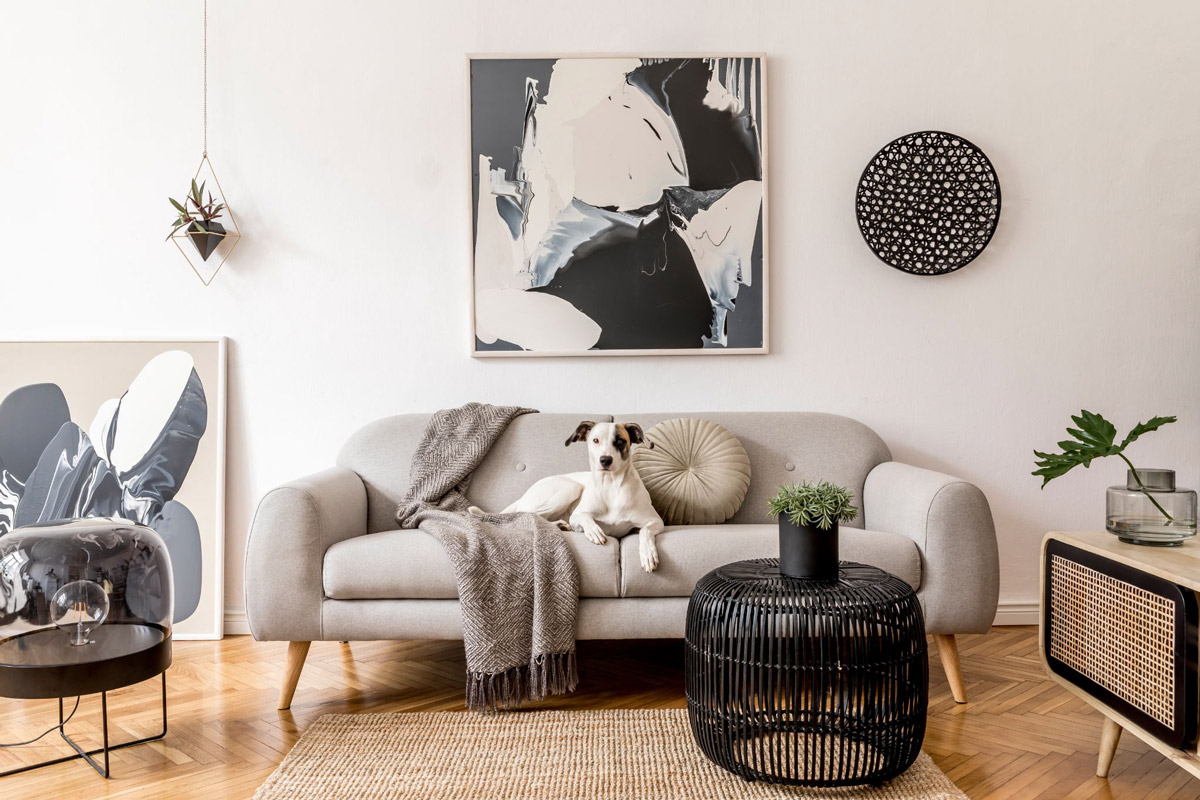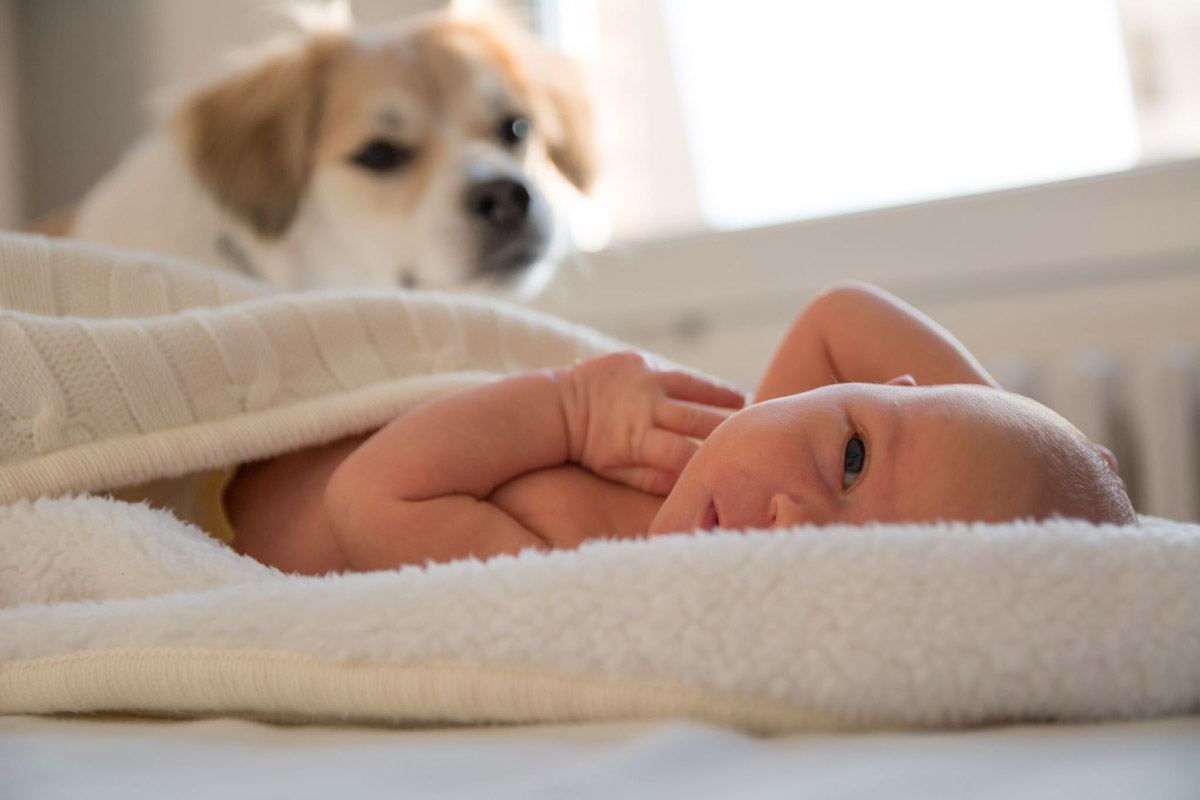Owning a dog is ruff work. From the basic care regimes like feeding and walking to obedience training and regular grooming, this is why taking care of a dog is a whole commitment beyond all the fluff and adorableness.
However, what happens when you suddenly introduce another adorable member into the household? Someone around 18 to 22 inches in height and weighs roughly between 5 to 8 lbs? If you have an honorary family member that matches that description, then congrats on the birth!
But otherwise, now that you have two rambunctious, inquisitive and playful members of the family, what now? Seems like you’ve got your hands full.
When pawrents become actual parents

Many expectant parents-cum-dog owners are often faced with this dilemma before the baby’s arrival: How can they properly introduce their family dog to the new infant? Especially if the dog has little to no exposure to children at all? How will the dog react to the baby?
These are all valid questions because dogs are animals and we can never know how they’ll react to a stranger entering their territory or safe space. Thankfully enough, the vast majority of dogs are readily accepting of infants after an initial period of curiosity and familiarisation.
But that’s not to say that canine aggression is completely out of the question. There are highly-publicised, albeit rare, cases of family dogs attacking a newborn. Although this is by no means the fault of the pup nor the baby, such situations are still horrible and should be prevented as far as possible. The last thing we want is for any dog to be euthanised because of ‘misconduct’ when in most cases, it’s not its fault.
With that said, there are several tactics to inculcate positive associations between your dog and infant.
How to predict whether my dog will harm a baby?

Many expectant parents-cum-dog owners are often faced with this dilemma before the baby’s arrival: How can they properly introduce their family dog to the new infant? Especially if the dog has little to no exposure to children at all? How will the dog react to the baby?
These are all valid questions because dogs are animals and we can never know how they’ll react to a stranger entering their territory or safe space. Thankfully enough, the vast majority of dogs are readily accepting of infants after an initial period of curiosity and familiarisation.
But that’s not to say that canine aggression is completely out of the question. There are highly-publicised, albeit rare, cases of family dogs attacking a newborn. Although this is by no means the fault of the pup nor the baby, such situations are still horrible and should be prevented as far as possible. The last thing we want is for any dog to be euthanised because of ‘misconduct’ when in most cases, it’s not its fault.
With that said, there are several tactics to inculcate positive associations between your dog and infant.
How to predict whether my dog will harm a baby?

As much as your doggo is the ‘goodest’ boy or girl, you’ll never be able to truly predict how it’ll react around your baby. Luckily for us, most dogs are simply curious about them and will inspect with inquisitive sniffs. However, it’s also possible that some dogs may perceive them as strange mammals or worse, potential prey.
This is especially true for dogs that have never encountered babies before. These dogs might not view babies as human beings. This is when the situation gets a little more complicated. Hence to help prevent accidents (even for typically non-aggressive dogs), basic precautionary measures should be enacted.

Maintaining the “sit” & “stay” commands are crucial!
For instance, a dog should ideally have undergone fundamental obedience training — even better if through formal training classes. For optimal results, obedience training should be conducted during a dog’s puppy years. More importantly, all this training should be instilled way before the baby is born.
- Ensure your dog understands and follows the basic commands “sit”, “down”, and “stay” even in highly stimulating or stressful environments.
- Simulate activities that will occur when the baby is present.
- Introduce your baby’s scent to your dog before bringing the newborn home.
- If step 3 is not feasible, always ensure to confine your dog and baby to separate rooms. Only allow them to be formally introduced once your dog is familiar with the baby’s scent.
- Allow your dog to see the baby but from a distance.
- Once things are more settled, allow your dog to roam around the house freely as usual with the baby present under close supervision.
Why and how to ensure my dog obeys basic commands?

Since you’ll want your pup to be in a calm and relaxed manner whenever the baby is around, learning basic commands will help keep it under control. Ideally, your dog should be able to “sit” or “lie down” on command with ease and “stay” in that position until the release command is given.
Always use positive reinforcement for command training. They should never be associated with punishment. Initially, you can start with treats to establish positive associations with the commands before transitioning to praises or pets as rewards.
How to simulate activities associated with a baby?
Once your dog has mastered basic obedience training, it’s time to increase the difficulty level. Begin simulating activities that will transpire when the baby’s around.
For instance, pretend you’re carrying the baby by using a toy doll wrapped around a blanket with the baby’s scent. Similarly, you can also start bringing home other items of clothing or apparel belonging to the infant. You may also commence playing a few recordings of baby cries and babbles.

Reward your dog’s calm behaviour
With these actions combined, your dog will soon become accustomed to these foreign smells and sounds. Through all this, your dog should always maintain a calm disposition. If your dog breaks the “sit/stay” command, simply correct this behaviour with a firm “no” and reinforce the commands again.
Remember, consistency is key. Repeating this list of commands in a stimulating environment is important to nurturing a well-behaved dog for your infant’s sake; at no point should you berate or threaten your dog.
The day your baby arrives

After all the rigorous training exercises, it’s finally the day your newborn comes home. This is a critical moment to see if all the hard work has truly paid off.
The mother should enter the house first and greet your dog without the baby present. Following that, lead your dog to a separate room while both of you adjust the baby to the new environment. Once everything is settled, you can finally let your dog greet the baby for the very first time — but only for a few minutes.

Leash up your dog for good measure
One person should be in charge of controlling and rewarding the pup while the other takes care of the baby. Depending on your pupper’s personality, the person with the baby can either be sitting or standing. Importantly, your dog should also be leashed up for extra precaution while in a “sit/stay” position.
Both the baby and your dog should be brought closer together gradually but only to the point where your dog can get a few sniffs in. Your dog shouldn’t be close enough to bite or scratch or lick (as cute as that is). Essentially, do not permit direct contact during these first interactions. The ideal distance would be about 1 metre apart.
Be sure to play by ear throughout the whole situation. If your dog shows signs of acting up (due to aggression or over-excitement), remove your dog from the room immediately. Rinse and repeat this along with executing basic commands until the situation is peaceful. The leash can also be removed at your discretion.
When can my dog freely wander around the house?

Set appropriate times for some well-deserved baby interactions
Your dog should never have access to the baby unsupervised. A baby gate at the entrance of the baby’s room would prove useful for cordoning off your doggo for the time being. Your dog should still primarily interact with familiar, existing household members.
You can also slowly assimilate your dog to appropriate times for baby interaction with verbal associations like “Let’s go see the baby” or reward it with a food treat. Once again, such treats aren’t necessary but they do help to retain interest and obedience levels.
Lastly, no one is certain when a dog comprehends the concept of the baby being a human. This time frame can take anywhere between a couple of days to a few weeks. It’s only after considerable time and repeatedly good behaviour that you can finally let down your guard a little and enjoy the growing family. But of course, do your due diligence to exercise caution and always err on the side of safety.
With that said, remember to continue spending quality time with your dog. With the arrival of the baby, it can be easy to be less sensitive to the needs of your pupper like being forgetful about playtime or gives fewer pets and cuddles to it.
Don’t get us wrong, we understand that parenthood is hard and most of your time and attention should be directed towards the infant. We just want to highlight that dogs can notice a decrease in love and attention received.
As a result, this would inadvertently impact your dog’s emotional, mental and physical health. In worse cases, this might even cause your dog to feel neglected and inadvertently perceive your baby as a threat and resent him/her, which is a huge no-no!
It stands to reason that leaving your baby unattended in the same room with your dog is a risky situation.
The general rule is to never leave a child younger than three alone with a dog.
All in all, this process cannot be rushed. Consistent training and constant supervision will go a long way. All your dog asks for is your patience and love to tide it through this new chapter of your lives.
This article was written in consultation with Dr Lennie Lee from The Animal Clinic.
For more pet-related enquiries, feel free to leave a direct message on The Animal Clinic’s Facebook page.










